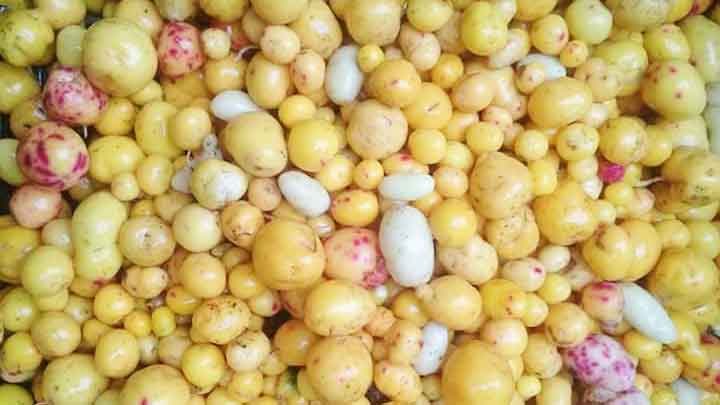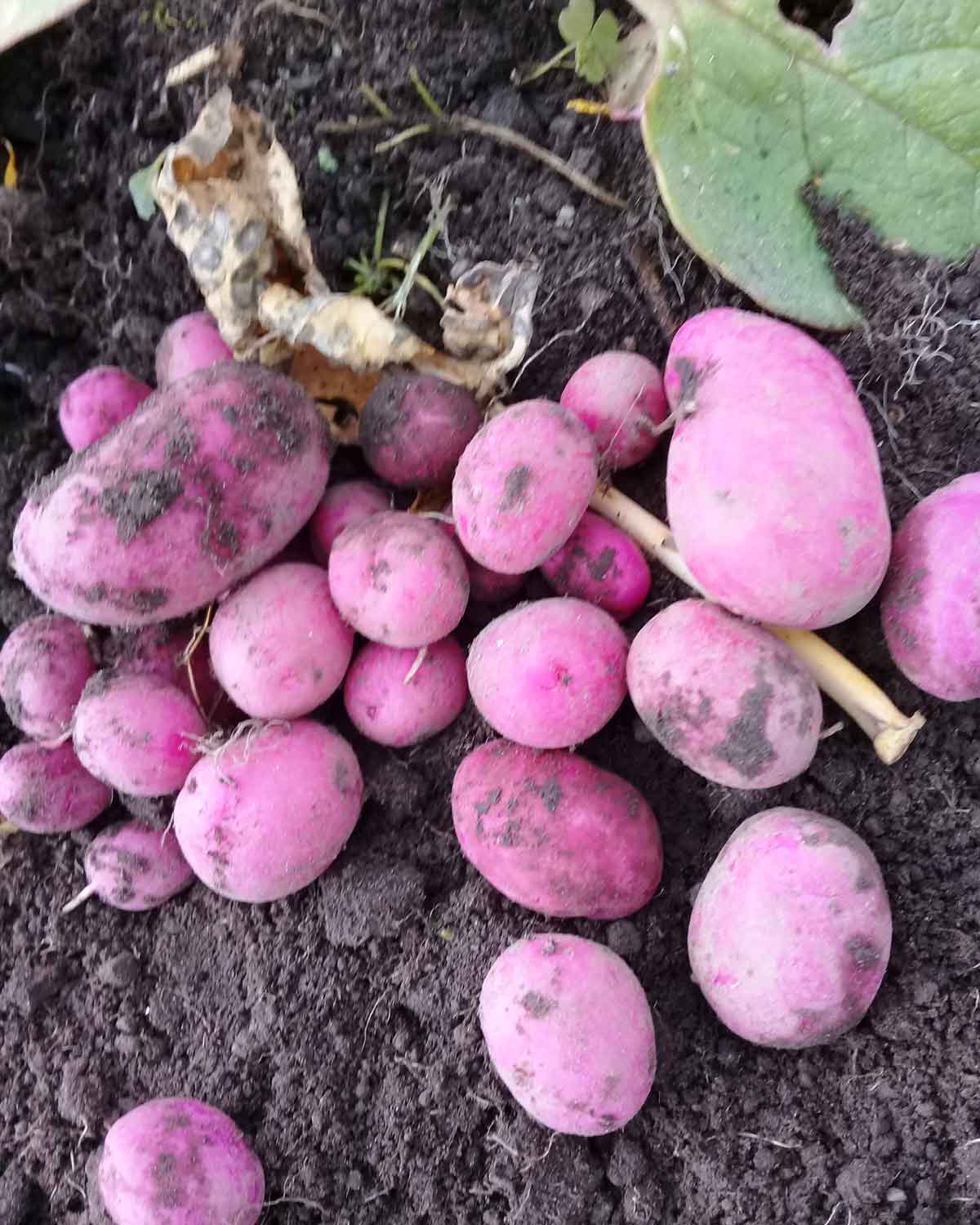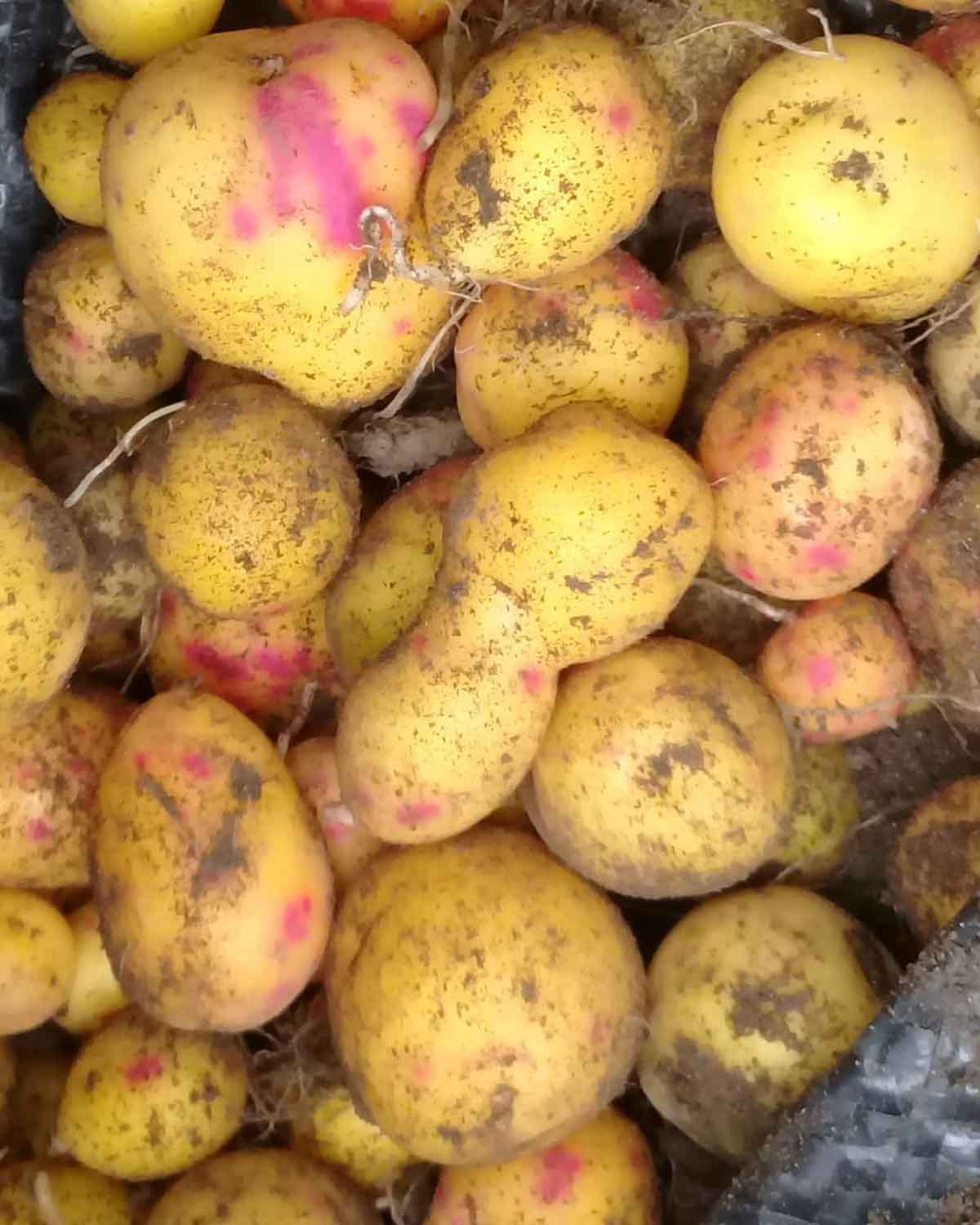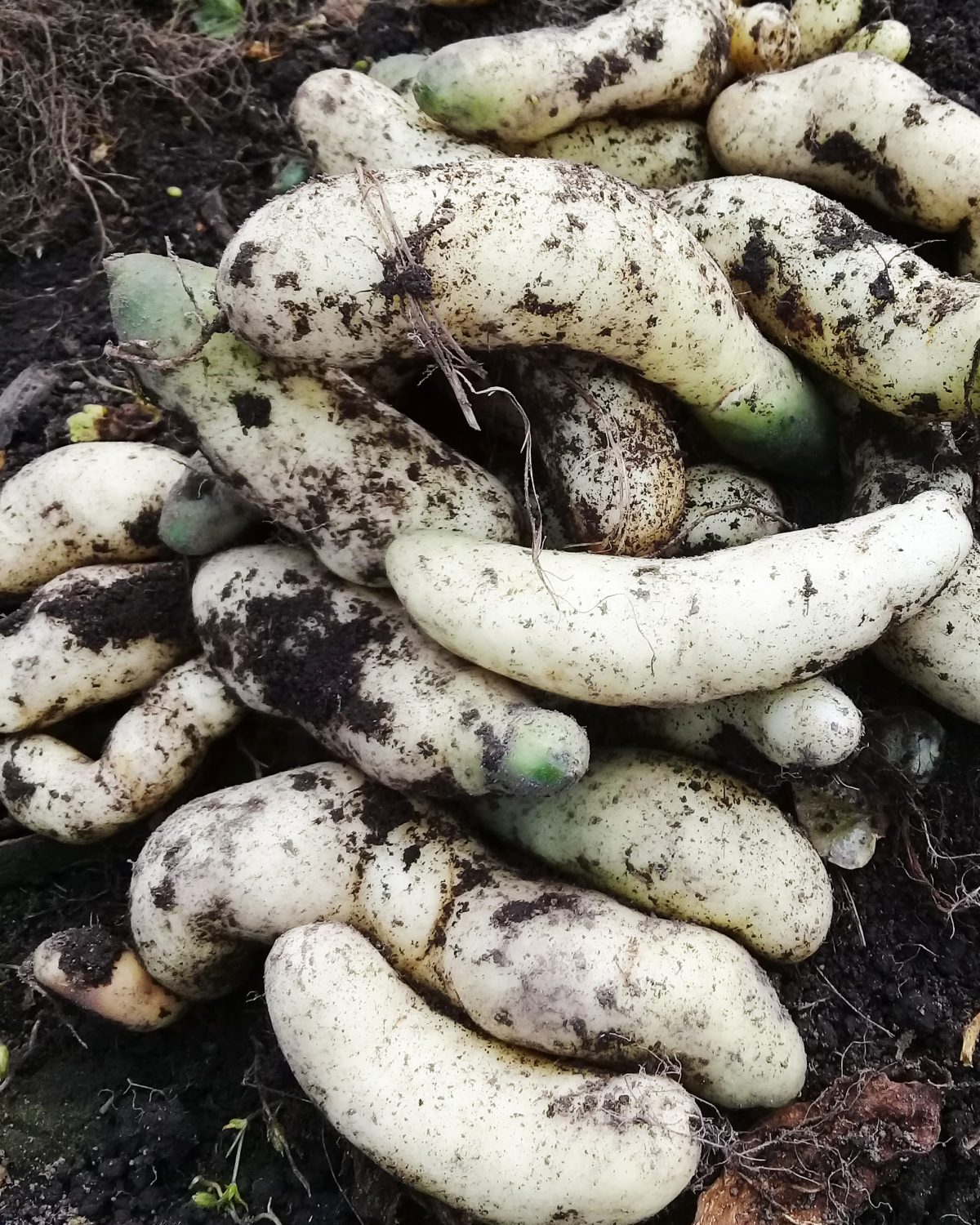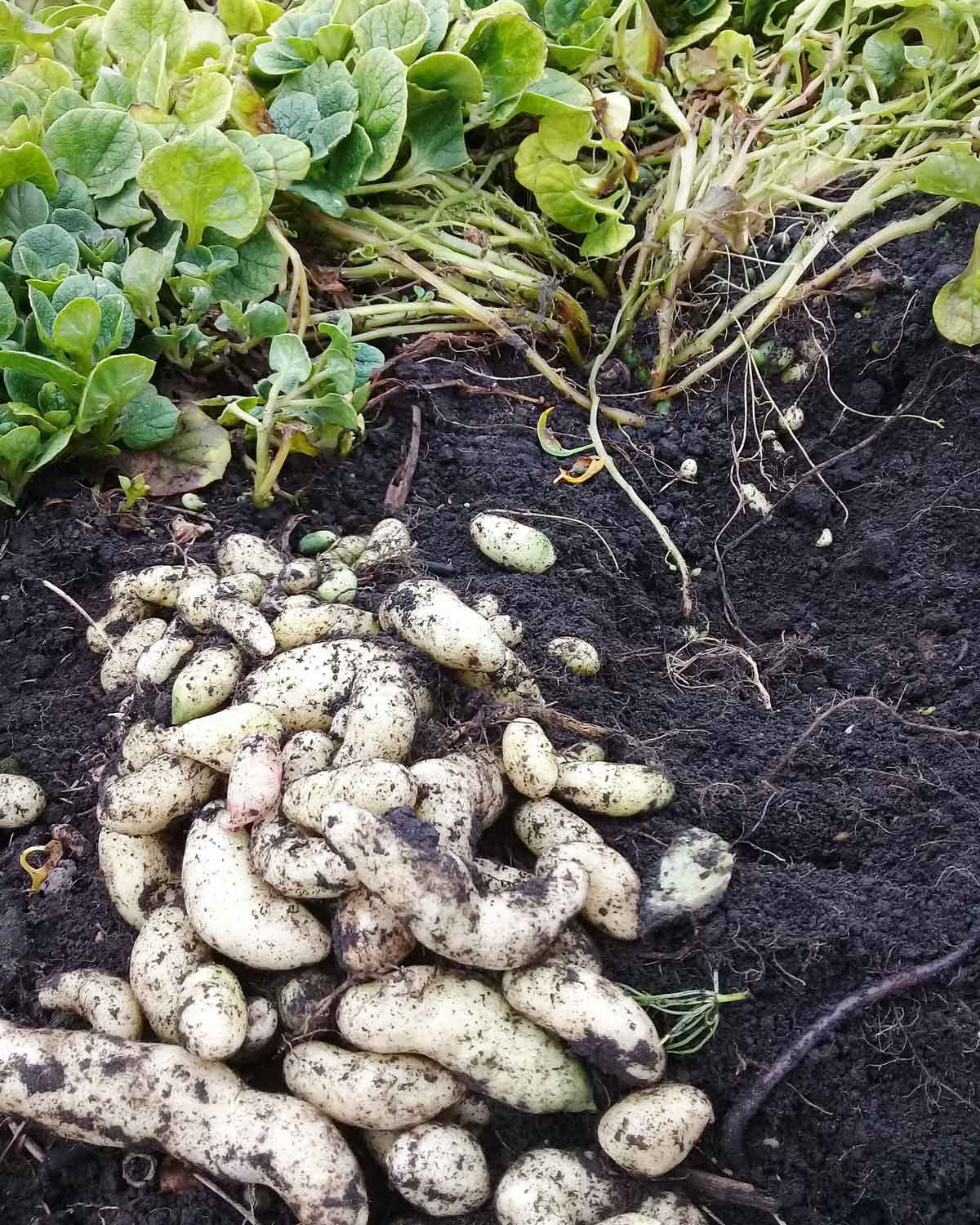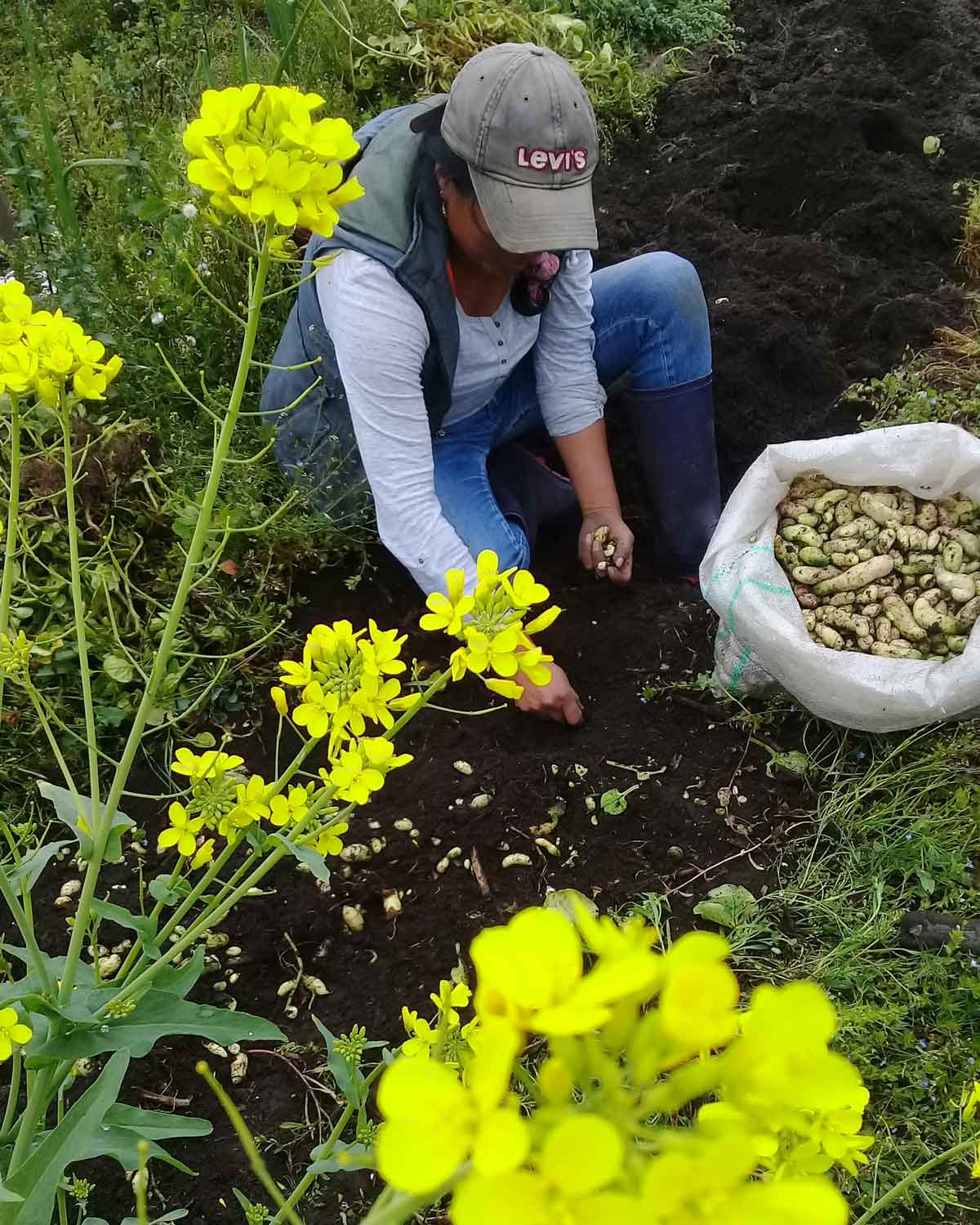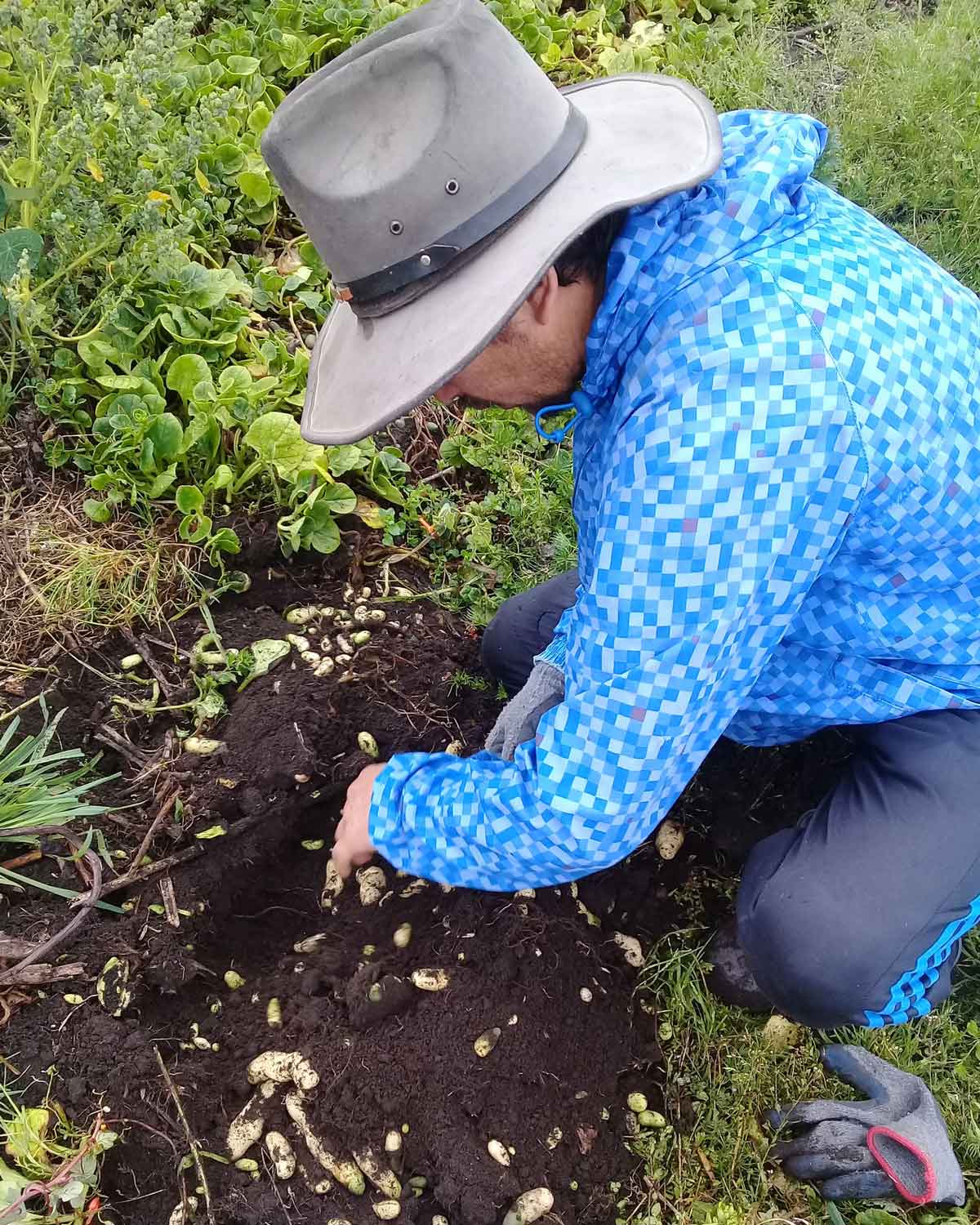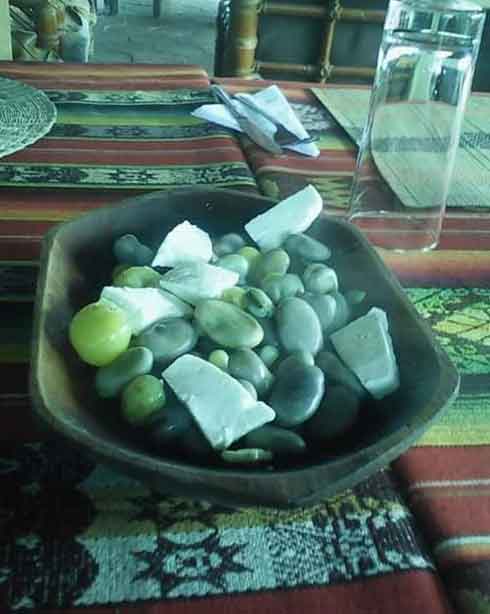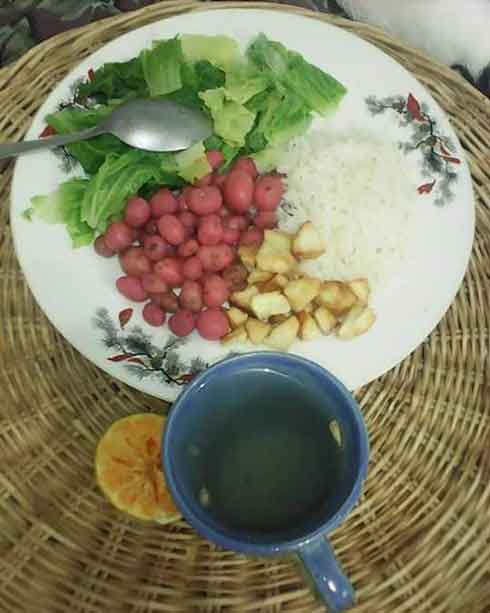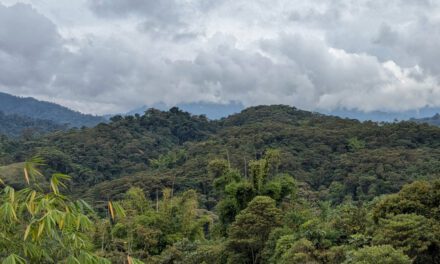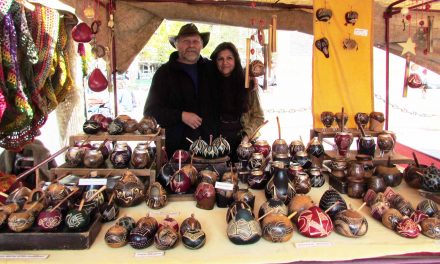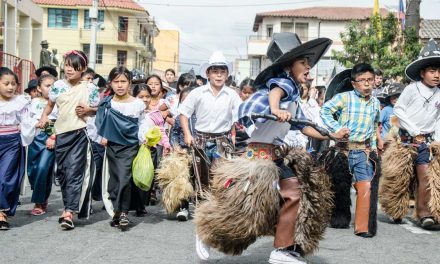As responsible travelers evolve, so do the stories we share.
This article is part of our living archive — trusted content we continue to care for.
First published on July 5, 2018 • Last updated on August 29, 2024.
A platter of grilled borrego arrives at the table with a side of tasty-looking baby potatoes. I pop one into my mouth and instead of the dry, fluffy texture of a perfectly cooked potato, my tongue recognizes the sliminess of nopales. I’ve just tried my first melloco and I’m not sure I like it.
I try again. When I bite through the thin, papery skin, the firm flesh explodes into a glutinous mass tasting of iron with hints of raw potato. While the description sounds less than appetizing, my mouth waters while writing this. That’s because I learned to like this strange, but surprisingly tasty, vegetable. In fact, I would go out of my way to eat melloco again.
What is melloco?
The melloco, or Ullucus tuberosus, is a tuberous root vegetable that grows in the Andes from Venezuela to Northern Argentina. Each country calls melloco by a different name: ulluco or tugua (Colombia), olluco (Peru), olloco (Argentina), ruba (Venezuela), and papa lisa (Bolivia) or simply lisa. But throughout Ecuador, this beloved vegetable is almost always called melloco, the double ll pronounced like a y or a soft slurred j: meh-zshoco.
Ranging in size from small marbles to ping-pong balls, mellocos come in many different colors. In Ecuador, the most common are a creamy yellow, a white, or a rosy pink. A less common, spotted variety looks as if Jackson Pollock had visited the Andes and painted his canvas with splotches of hot pink on a pearly white background.
Health Benefits of Melloco
Melloco is high in protein, calcium, and Vitamins A and C. In fact, many native Ecuadorians consider it to be a superfood. It is purported to benefit the prostate and the stomach. It is especially helpful in healing gastric ulcers. Mothers and grandmothers recommend melloco to help with all kinds of stomach complaints. It’s the ultimate Ecuadorian comfort food!
Raw melloco is also used topically to treat skin conditions, especially acne.
Where to buy melloco
One of my Ecuadorian friends, Maribel Quija, recently reintroduced me to melloco. She co-owns and operates a small farm near Quito with her husband, Víctor Hugo Toapanta Villamarín. Their business, Chi-Sinchi Tambo Organico, delivers fresh, organic veggies throughout metropolitan Quito. The most recent harvest included three varieties of fresh melloco: “Rosa Clavel,” the pink spotted gourmet tuber; the blanco alargado, an elongated creamy white melloco; and the pretty, Easter egg pink variety, melloco rojo.
If you would prefer to shop for your own, almost every market in the Andes sells at least one variety of melloco. In Quito, check out stalls in our favorite Iñaquito or many of the other markets around town. Better yet, if you want to try them already cooked, the best place to find them are the food stalls at local vegetable markets. Look for customers eating fresh fava beans with cheese or boiled ears of corn. Those stalls are the most likely to have melloco on the menu.
For those of us living outside of South America, the hunt for melloco will be a little harder. According to Laylita of Laylita.com, she has only found a canned variety on supermarket shelves. The canned melloco lacks the flavor and texture of fresh.
With the recent changes in exportation laws in the United States, perhaps melloco will be next in line for the US market.
How do you cook melloco?
Melloco is used very much like red potatoes in the United States. Boiled, often peeled, and then sliced, they make excellent additions to salads. They can also be pan-fried like breakfast potatoes.
My favorite way to eat melloco is also one of the simplest: boiled for a few minutes until al dente, often with freshly shelled fava beans, then served with salty farmer’s cheese and a little ají. Using fingers, pick up a fava bean, dip it in salt or ají and suck out the delicious soft bean from its tough outer skin. Pick up a melloco and repeat. Alternate with bites of fresh cheese. Yum!
The above-ground, dark, leafy greens of melloco are also edible. In fact, melloco leaves look very similar to Malabar spinach and can be cooked in the same way.
Contact Chi-Sinchi Tambo Organico For More Information
- Call or WhatsApp: +593 96 950 8663
- Facebook: https://www.facebook.com/ChisinchiTamboOrganico/

